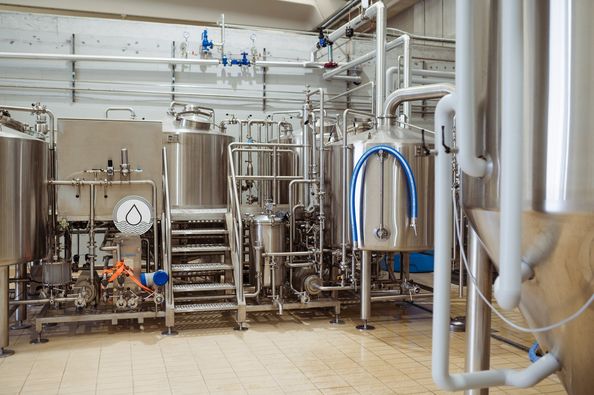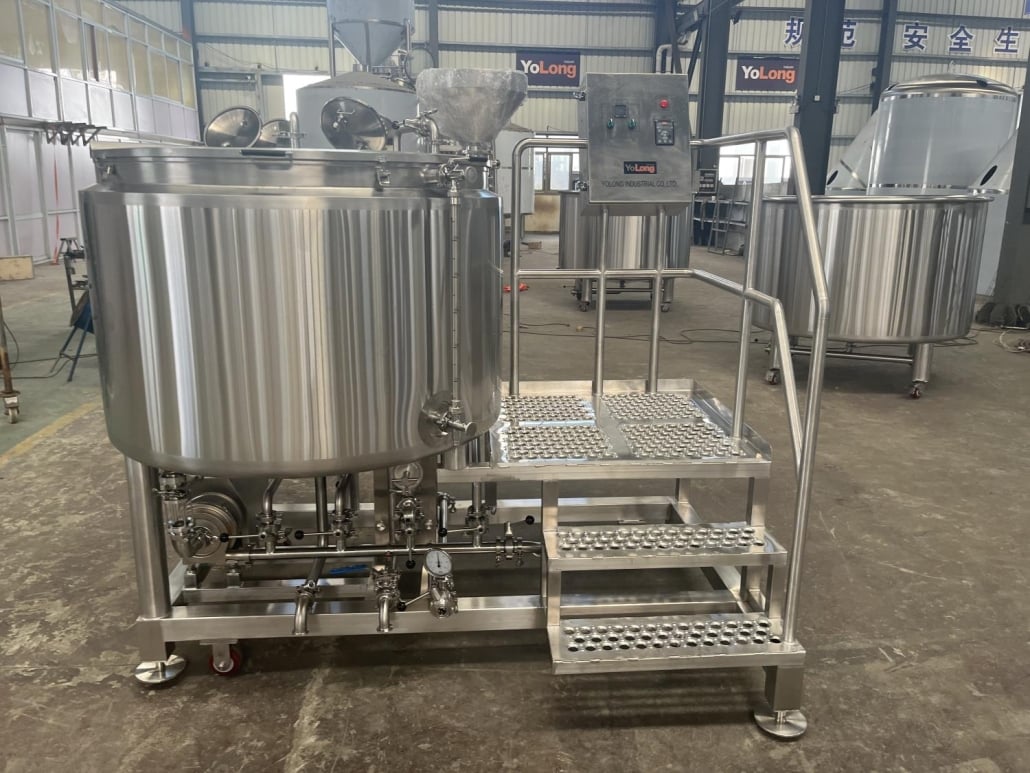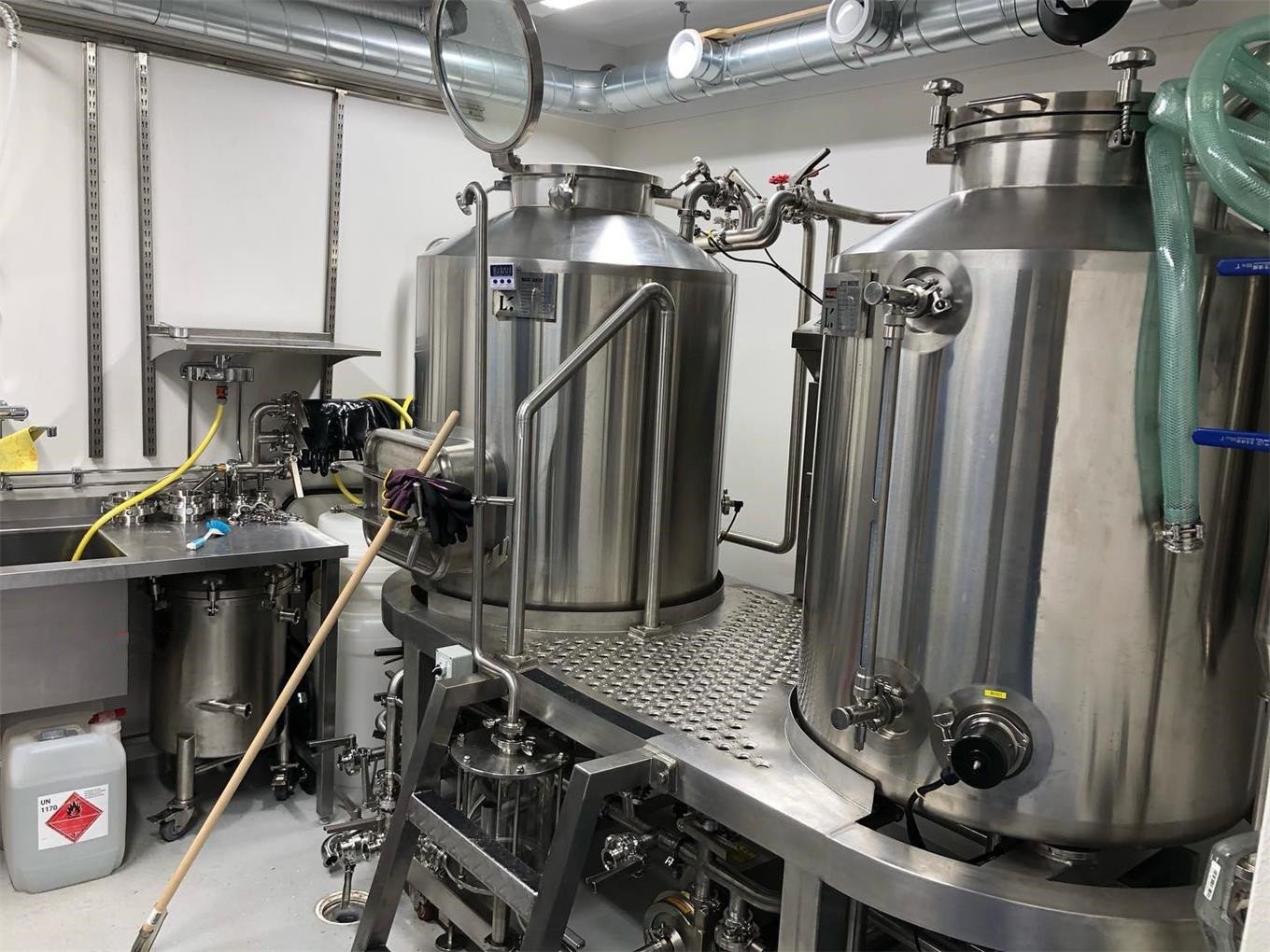The Ultimate Guide to 100L Fermenters
Overview: Understanding the 100L Fermenter
When it comes to brewing, whether you’re a homebrewer leveling up or a small craft brewery scaling production, the 100L fermenter is a critical piece of equipment that offers flexibility, control, and efficiency. Fermentation is the heart of brewing, where wort transforms into beer, and having the right fermenter can make all the difference in the quality of your final product.
A 100L fermenter provides an ideal capacity for small-scale commercial brewing or advanced homebrewing, giving you enough volume to experiment with various recipes while maintaining control over the process. It’s large enough to yield a significant amount of beer without overwhelming you with the complexities of managing an industrial-sized batch.
In this comprehensive guide, we will explore everything you need to know about 100L fermenters, from types and designs to operation, maintenance, and selecting the best supplier for your needs. We’ll also delve into the brewing process, compare various models, and answer some frequently asked questions to help you make an informed decision.

Types of 100L Fermenters
The type of fermenter you choose can significantly impact your brewing process. Here’s a detailed look at the different types of 100L fermenters:
| Fermenter Type | Description | Best For | Advantages | Disadvantages |
|---|---|---|---|---|
| Conical Fermenter | Features a cone-shaped bottom for easy yeast and sediment removal. | Commercial and homebrewers | Better clarity, Yeast harvesting, Easy cleaning | Higher cost, Larger footprint |
| Flat-Bottom Fermenter | Simple design with a flat bottom, often used with airlocks. | Beginners and hobby brewers | Lower cost, Compact design, Ease of use | Difficult to separate trub, Less professional appearance |
| Unitank Fermenter | Acts as both fermenter and serving vessel, reducing the need for transfers. | Small breweries, advanced homebrewers | Versatile, Less transfer required, Pressure fermenting possible | Expensive, Complex to operate |
| Open Fermenter | Used in traditional brewing, allowing exposure to air. | Specialty brews, open fermentation styles | Unique flavor development, Traditional brewing methods | Risk of contamination, Requires careful monitoring |
The Brewing Process with a 100L Fermenter
The brewing process can be broken down into several key steps where the 100L fermenter plays a crucial role. Here’s an overview of how it all comes together:
- Wort Transfer: After boiling the wort, it’s transferred to the fermenter. With a 100L capacity, you’ll need to manage the transfer efficiently to avoid oxidation and contamination. The size of this fermenter allows for controlled transfer, especially when using pumps designed for brewing.
- Pitching Yeast: Yeast is added to the wort in the fermenter to start the fermentation process. The 100L volume provides ample space for yeast to propagate, especially if you’re aiming for a strong, robust fermentation.
- Fermentation Monitoring: This is where the magic happens. Over the course of several days to weeks, the wort will ferment into beer. Monitoring temperature, pressure, and gravity is critical, and a 100L fermenter often comes equipped with ports for thermometers, pressure gauges, and sampling valves.
- Yeast and Sediment Removal: For conical fermenters, this step is particularly easy. You can remove sediment and yeast from the bottom of the fermenter, ensuring a cleaner beer without the need for filtration.
- Cold Crashing: To clear the beer, you may want to lower the temperature, causing proteins and yeast to flocculate and settle. The design of a 100L fermenter, particularly those with cooling jackets, facilitates this process.
- Packaging: After fermentation is complete, the beer is ready to be packaged. Depending on your fermenter type, you might transfer to kegs, bottles, or directly serve from a unitank.
Design, Layout, and Customization of 100L Fermenters
When selecting a 100L fermenter, the design and customization options are key considerations. Here’s a look at the factors that can be customized to suit your brewing needs:
| Feature | Options | Considerations |
|---|---|---|
| Material | Stainless Steel, Plastic, Glass | Stainless steel is the most durable, Plastic is lighter and cheaper, Glass offers clarity |
| Cooling Jackets | Single Zone, Dual Zone | Cooling control for precise fermentation, Dual zone offers more flexibility |
| Pressure Rating | Non-pressurized, Pressurized | Pressurized fermenters are ideal for carbonation and transferring under pressure |
| Port Configuration | Top-mounted, Side-mounted | Easy access for sampling, adding ingredients, and monitoring |
| Size and Footprint | Compact, Standard | Depends on your available space and batch sizes |
| Automation | Manual, Semi-automated, Fully automated | Automation can ease the brewing process but may require more investment |
Selecting the Right 100L Fermenter Supplier
Choosing the right supplier for your 100L fermenter can be as crucial as selecting the equipment itself. Here’s how to make an informed decision:
| Supplier | Country of Origin | Price Range | Customer Support | Customization Options | Lead Time |
|---|---|---|---|---|---|
| Supplier A | USA | $2,000 – $5,000 | 24/7 support, Dedicated account manager | Extensive | 4-6 weeks |
| Supplier B | Germany | $3,000 – $6,000 | Email and phone support | Limited | 6-8 weeks |
| Supplier C | China | $1,500 – $4,000 | Standard business hours | Moderate | 8-10 weeks |
| Supplier D | Italy | $2,500 – $5,500 | Comprehensive support, Installation services | Extensive | 4-8 weeks |
How to Choose the Best 100L Fermenter Supplier
Selecting the right supplier involves several considerations:
- Quality and Material: Evaluate the quality of the materials used, especially if you’re opting for stainless steel. Ensure that the supplier adheres to food-grade standards.
- Customization Options: If you need specific features or a custom design, choose a supplier that offers these services. This could range from additional ports to cooling jackets.
- Price and Value: Compare prices, but also consider what’s included—like shipping, installation, and support. Sometimes, paying a bit more upfront can save you from headaches later on.
- Customer Support: Good customer support can make a huge difference, especially if you encounter issues during installation or operation. Check if the supplier offers support in your region.
- Reputation and Reviews: Look into customer reviews and the supplier’s reputation in the industry. Word-of-mouth recommendations and online reviews can give you insights into their reliability.
- Lead Time and Delivery: Ensure that the lead time fits your production schedule. Some suppliers might have longer lead times due to customization or international shipping.
Operating and Maintaining a 100L Fermenter
Operating a 100L fermenter involves understanding its controls and following best practices for maintenance to ensure longevity and optimal performance.
| Operation | Tips | Best Practices |
|---|---|---|
| Temperature Control | Use a cooling jacket or temperature controller to maintain consistent fermentation temperatures. | Regularly calibrate your temperature sensors and maintain a stable environment for fermentation. |
| Pressure Management | If your fermenter is pressurized, monitor the pressure closely to avoid over-pressurization. | Always release pressure gradually, and use pressure relief valves as a safety precaution. |
| Sanitation | Clean and sanitize thoroughly before and after each use to prevent contamination. | Use food-grade sanitizers, and ensure all surfaces and fittings are free from residues. |
| Sampling and Monitoring | Take regular samples to check gravity, pH, and flavor development. | Use dedicated sampling ports to avoid opening the fermenter unnecessarily, reducing contamination risk. |
| Yeast Management | Harvest and store yeast properly if reusing. | Ensure yeast is stored at the right temperature and viability is checked before reuse. |
Maintenance
Regular maintenance is key to the longevity of your fermenter:
- Routine Cleaning: After each batch, disassemble all removable parts and clean them thoroughly. This includes valves, seals, and ports.
- Inspection: Regularly inspect your fermenter for signs of wear, such as scratches, corrosion, or gasket wear. Replace parts as needed to maintain a good seal and prevent leaks.
- Lubrication: Lubricate moving parts like valves and hinges to ensure smooth operation. Use food-grade lubricants to avoid contamination.
- Calibration: Ensure all gauges and sensors are calibrated regularly to maintain accuracy. Inaccurate readings can lead to poor fermentation results.
- Storage: If not in use for extended periods, store your fermenter in a clean, dry environment. Cover it to prevent dust accumulation and ensure it’s ready for use when needed.
Comparing 100L Fermenters: Advantages and Limitations
When deciding on a 100L fermenter, it’s important to weigh the pros and cons of each type:
| Fermenter Type | Advantages | Limitations |
|---|---|---|
| Conical Fermenter | Efficient yeast removal, Easy cleaning, High clarity in final product | Higher cost, Requires more space |
| Flat-Bottom Fermenter | Lower cost, Simple to use, Compact design | Difficult sediment removal, Higher risk of off-flavors |
| Unitank Fermenter | Versatile use, Less transfer required, Pressure fermenting | Expensive, Requires more complex setup and operation |
| Open Fermenter | Unique flavor profiles, Traditional brewing methods | High contamination risk, Requires meticulous monitoring |
Choosing the Right 100L Fermenter for Your Needs
When selecting a 100L fermenter, consider the following factors:
- Batch Size and Production Goals: If you plan to scale your brewing operations, a conical or unitank might be a better investment. However, for hobbyists or small-scale brewers, a flat-bottom fermenter might suffice.
- Budget Constraints: While conical fermenters and unitanks offer more features, they also come at a higher price. Evaluate if the added cost is justified by the benefits for your specific brewing style.
- Space Availability: Ensure you have the necessary space to accommodate the fermenter, considering its footprint and height. Conical fermenters typically require more vertical space due to their design.
- Experience Level: Beginners might prefer the simplicity of a flat-bottom fermenter, while more experienced brewers may opt for the versatility of a unitank or conical fermenter.
- Fermentation Style: For specific styles like traditional ales or sours, an open fermenter might be desirable despite the risks. For standard beer types, a closed system is generally preferred.

FAQ
| Question | Answer |
|---|---|
| What is the typical price range for a 100L fermenter? | Prices typically range from $1,500 to $6,000, depending on material, design, and features. |
| How much space do I need for a 100L fermenter? | You’ll need a space of roughly 2-3 square meters, with additional vertical clearance for conical fermenters. |
| Can I use a 100L fermenter for pressure fermentation? | Yes, if it’s a pressurized fermenter. Ensure it’s rated for the pressure levels you intend to use. |
| How do I clean and sanitize a 100L fermenter? | Disassemble all removable parts, clean with a non-abrasive cleaner, and sanitize with a food-grade sanitizer. |
| What materials are best for 100L fermenters? | Stainless steel is the most durable and easy to sanitize, though plastic and glass are cheaper alternatives with their own pros and cons. |
| Do I need a cooling jacket for my 100L fermenter? | It’s recommended if you need precise temperature control, especially for lagers or other temperature-sensitive brews. |
| Is it necessary to have a conical fermenter? | Not necessarily, but conical fermenters offer better sediment management and are generally easier to clean and maintain. |
Conclusion
Choosing a 100L fermenter involves balancing your brewing goals, budget, and space considerations. Whether you opt for a simple flat-bottom model or a sophisticated unitank, understanding the different types and their specific advantages can help you make an informed decision. By following proper operation and maintenance practices, you can ensure that your 100L fermenter delivers consistent, high-quality brews for years to come.
Remember, the right equipment is an investment in your brewing journey, so take the time to research, compare options, and select a fermenter that aligns with your needs. With this guide, you’re well-equipped to make a choice that will enhance your brewing experience, whether you’re a hobbyist or a commercial brewer on the rise.
Additional FAQs on 100L Fermenters (2025)
1) What pressure rating should I choose for a 100L fermenter?
- For pressure fermentation and closed transfers, select at least 1–2 bar working pressure with a certified PRV. Non-pressurized vessels are fine for ales but limit spunding and oxygen-free transfers.
2) Do I need single- or dual-zone cooling on a 100L fermenter?
- Single-zone suits most ales. Dual-zone improves control for lagers, high-gravity fermentations, and crash cooling, reducing stratification in taller cones.
3) How can I minimize oxygen pickup with a 100L fermenter?
- Use CO2 purges on lines and headspace, pressure-capable racking arms, closed transfers to kegs/brite, and avoid opening manways post-fermentation. Target knock-out DO <150 ppb and minimal DO during transfers.
4) What CIP features matter most at the 100L scale?
- Validated sprayball coverage, drainable piping, sanitary tri-clamps, and ports for temperature/conductivity. A riboflavin test and CIP logging improve repeatability.
5) Which accessories deliver the highest ROI?
- Thermowell + external controller, spunding valve, floating dip tube or adjustable racking arm, sample valve, carbonation stone, and a 1.5–2” dump port for efficient yeast harvesting.
2025 Industry Trends for 100L Fermenters
- Pressure-ready unitanks: More 100L models ship with 1–2 bar ratings, enabling spunding, natural carbonation, and closed transfers.
- Integrated sensors: Thermowells, optional pressure transducers, and app-linked controllers for remote alerts and batch logs.
- Oxygen control by design: Pre-installed CO2 ports, PRV upgrades, and low-DO transfer kits become standard options.
- Hygienic finishes: Higher adoption of electropolished stainless and crevice-minimized fittings to speed CIP and reduce micro harborage.
- Sustainability: Better insulation jackets and glycol valve control lower energy use during fermentation and crash cooling.
100L Fermenter Benchmarks and KPIs (2025)
| Metric | Typical Range/Target | Why it matters |
|---|---|---|
| Working pressure rating | 1–2 bar (with certified PRV) | Enables spunding and closed transfers |
| Fermentation temp stability | ±0.3–0.8°C | Consistent attenuation and ester profile |
| Cold crash rate | 1–2°C per hour to 0–2°C | Promotes clarity without shocking yeast |
| CIP cycle time | 30–60 minutes | Fast turnaround with validated cleaning |
| Surface finish (internal) | ≤Ra 0.6–0.8 μm, electropolish preferred | Hygiene and faster CIP |
| Knock-out DO | <50–150 ppb | Flavor stability |
| Yeast harvest time | <10 minutes via 1.5–2” dump | Viable reuse and clarity |
| Leak/pressure test interval | Before first use; every 6–12 months | Safety and performance |
Selected sources: Brewers Association QA resources; ASBC Methods of Analysis; OEM specifications (Ss Brewtech, Blichmann, Spike, GEA/Steinecker); trade press 2024–2025.
Latest Research Cases
Case Study 1: Pressure-Fermented Lagers in a 100L Unitank Improve Turnaround (2025)
- Background: A pilot brewery needed faster lager production without flavor compromise.
- Solution: Upgraded to a 100L pressure-rated unitank (2 bar), dual-zone cooling, spunding valve, and closed transfer kit; standardized cold crash and carbonation.
- Results: Tank residency shortened by 20–25%; diacetyl rest control improved; dissolved oxygen at package reduced to ~80–100 ppb; sensory panel noted cleaner malt profile.
Case Study 2: CIP Validation Cuts Off-Flavors and Downtime (2024)
- Background: Advanced homebrewer using a 100L conical had sporadic phenolic off-notes.
- Solution: Implemented riboflavin spray coverage tests, adjusted pump flow/pressure, logged CIP temperature and conductivity, and replaced worn gaskets with FKM.
- Results: Off-note incidents eliminated across 6 batches; CIP time reduced 15%; water/chemical use dropped ~12%; gasket-related leaks ceased.
Expert Opinions
- Tom Shellhammer, Ph.D., Professor of Fermentation Science, Oregon State University
- Viewpoint: “At the 100L scale, precise temperature control and trub management drive measurable gains in flavor stability and foam.”
- Mary Pellettieri, QA Consultant; Author of “Quality Management for Craft Beer”
- Viewpoint: “Tie sanitation to data—CIP validation, DO checks, and documented SOPs prevent the small variability that becomes big shelf-life issues.”
- John Palmer, Author of “How to Brew”
- Viewpoint: “Pressure capability and proper oxygen control transform a good fermenter into a great one—especially for lagers and hop-forward beers.”
Practical Tools and Resources
- Brewers Association (QA, cellar practices): https://www.brewersassociation.org
- ASBC Methods of Analysis (oxygen, microbiology): https://www.asbcnet.org
- OEM specs and accessories for 100L fermenters: https://www.ssbrewtech.com | https://spikebrewing.com | https://www.blichmannengineering.com
- QA instrumentation (DO/TPO, CO2, density): https://www.anton-paar.com
- ProBrewer forums (fermenter selection, pressure/PRV, CIP): https://www.probrewer.com
- Safety guidance (pressure vessels/PRVs): https://www.osha.gov
Implementation tip: When evaluating 100L fermenters, request material certs, PRV/pressure test documentation, internal surface finish (Ra) spec, P&ID/port map, sprayball flow/pressure curves, and recommended CIP chemistry/parameters. Verify compatibility with your glycol system and available footprint/height.
Last updated: 2025-09-29
Changelog: Added 5 targeted FAQs, 2025 trend insights with KPI table for 100L fermenters, two recent case studies (pressure fermentation; CIP validation), expert viewpoints, and vetted tools/resources
Next review date & triggers: 2026-03-31 or earlier if OEM pressure/finish specs or BA/ASBC QA targets are updated, or if new safety/PRV standards for small unitanks are released
Share this entry
Interested in learning more about Brewing Systems including additional details and pricing information? Please use the form below to contact us!
YOLONG BREWERY EQUIPMENT FAQS
- Commercial Brewery / Craft Brewery / Microbrewery / Nanobrewery
- What is The Difference Between Craft Beer and Industrial Beer?
- The Bespoke Differences In Custom Brewing Systems
- Everything You Need to Know About Kettle Souring
- How to Choose Brewing Equipment for Your business?
- How To Choose The-Best Partner To Build Your Commercial Microbrewing System?
- Two Detection Sensors That You Need To Use In Your Brewhouse System
- Remote Control Applications in Brewing Equipment/How does it work?
- How To Clean Your Brand New Brewery Tanks?

